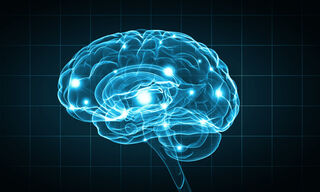
Transcranial Magnetic Stimulation (TMS) is a sophisticated, non-invasive method used to modulate brain activity and treat various neurological and psychiatric conditions. The technique involves placing an electromagnetic coil on the scalp to generate magnetic pulses that penetrate the skull and influence the underlying brain tissue tms depression. This innovative approach offers a promising alternative for individuals with conditions that have not responded well to traditional treatments.
The process of TMS begins with the placement of the coil on the patient’s scalp, usually near the forehead. The coil produces brief magnetic pulses that create electrical currents in targeted regions of the brain. These currents can either excite or inhibit neuronal activity depending on the frequency and strength of the pulses. High-frequency stimulation tends to increase neuronal activity, while low-frequency stimulation reduces it. By modulating brain function in this manner, TMS aims to correct abnormal activity patterns associated with specific mental health conditions.
One of the most significant applications of TMS is in the treatment of major depressive disorder (MDD). For patients who have not found relief through antidepressant medications or psychotherapy, TMS offers a valuable alternative. Research has shown that TMS can lead to substantial improvements in depressive symptoms and overall mood. The therapy is typically administered over several weeks, with patients undergoing multiple sessions. Each session is relatively short, and patients can resume their normal activities immediately afterward, making TMS a convenient option for those with busy lives.
Beyond depression, TMS is also being explored for its potential benefits in treating other mental health conditions, including anxiety disorders, post-traumatic stress disorder (PTSD), and obsessive-compulsive disorder (OCD). Preliminary studies suggest that TMS may help reduce symptoms of these conditions by targeting specific brain regions involved in their pathophysiology. While research is ongoing, the ability to customize TMS treatment based on the individual’s condition holds promise for improving outcomes and providing relief where other treatments may fall short.
The safety profile of TMS is generally favorable, with most patients experiencing only mild and transient side effects. Common side effects include discomfort at the site of stimulation, headaches, and scalp tenderness. These effects are typically brief and resolve shortly after the session. Unlike some treatments, TMS does not involve systemic side effects or the risk of drug interactions, making it an appealing option for those who prefer to avoid pharmacological treatments.
However, TMS is not without limitations. Its effectiveness can vary based on individual factors such as the specific condition being treated and the patient’s overall health. It is essential for patients to work closely with their healthcare providers to determine if TMS is a suitable option for their specific needs. Additionally, while TMS has shown promise, it may not be effective for everyone, and some patients may require a combination of treatments for optimal results.
As research into TMS continues to evolve, its applications and understanding are likely to expand. Ongoing studies aim to refine the technique and explore its potential for additional conditions and patient populations. TMS represents a significant advancement in the field of neuromodulation, offering a non-invasive and promising alternative for individuals seeking relief from challenging neurological and psychiatric conditions. With its growing body of evidence and evolving applications, TMS provides hope for many who have struggled to find effective treatments through traditional methods.
Be First to Comment